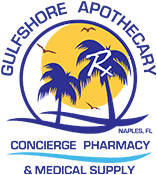Macular Degeneration involves the deterioration of the retina which is responsible for the central part of the vision in the eye. Damage to the macula, or central spot of the retina, is what gives it its name. The retina is critical to clear central vision and is what allows us to see objects straight ahead. Generally, it is referred to as Age Related Macular Degeneration (AMD) because it primarily affects people over 60 years old. There is one type of macular degeneration that affects young people and is caused by a recessive gene. This is called Stargardt Disease and is relatively rare with only 1 in 10,000 people likely affected. In contrast, AMD is the leading cause of vision loss in individuals over 50 years old. It affects approximately 11 million people in the United States and 170 million worldwide.
AMD has two basic types-dry and wet forms. Dry AMD accounts for most of all cases with nearly 85-90% of all affected people having this type. Wet AMD only accounts for 10-15% of affected individuals and it is wet AMD that causes 90% of severe vision loss. Generally dry and wet forms of AMD have different underlying issues, but in 10% of cases, dry AMD can later progress to the wet form of AMD. People who have wet AMD did start out with the dry form initially.
Dry AMD is caused by accumulation of drusen which is a yellowish deposit which sits beneath the retina. It is formed from waste products in the body, consisting of cholesterol, protein, and fat. Within the dry AMD cases, there are 3 subtypes-early, intermediate, and late AMD. In early cases, there are often no vision symptoms at all. Intermediate dry AMD can produce some vision loss, and in patients with late AMD there is noticeable vision loss. Dry AMD does not have any targeted treatment currently. Risk for developing AMD and slowing its progression can be assisted by not smoking, controlling blood pressure and cholesterol, getting exercise, and eating a diet containing green leafy vegetables and fish. Eye vitamin supplements that include vitamins C & E, zinc, copper, lutein, and zeaxanthin can be beneficial in all stages of the disease process. Vitamin A in the form of beta carotene can also be a useful supplement, however, should not be taken by anymore who is a current or former smoker due to an increased risk of developing lung cancer.
Wet AMD is a more serious type of AMD and can lead to severe vision loss if it is undiagnosed and not treated. Wet AMD does have some treatments available. These include Avastin, Lucentis, and Eylea. Wet AMD is a neovascular process that involves vascular endothelial growth factor (VEGF). This growth factor promotes the growth of new abnormal blood vessels. Avastin, Lucentis, and Eylea are anti-VEGA drugs that stop the formation of blood vessels behind the retina and stop leaking blood vessels as well. They are administered as a series of injections right into the retina on a 5 to 10 week schedule. These drugs have shown effectiveness to reverse the disease process or at least stop further progression of the disease in many patients.
Macular degeneration can produce visual symptoms such as blurred vision, fuzzy vision, wavy lines, decreased color vision, and/or dark gray areas in the center of vision. They may present later in the disease process. Approximately 50% of AMD patients who experience some degree of sight loss can have visual hallucinations. These hallucinations are due to what is called Charles Bonnet Syndrome. When the brain detects a breakdown in the visual pathway, it creates images on its own. Patients may experience grids, checkerboards, colors, and other visual images. While these certainly can be frightening, they are often temporary and can subside within 18 months of onset. The visual part of the brain readjusts to decreased input from the retina and the images lessen over time. Macular degeneration can be diagnosed by a retina specialist. Tests used in the evaluation and diagnosis include visual acuity tests, dilated eye exams, Amsler grid test, and fluorescein angiogram. Routine eye exams are important to detect changes within the retina. Certainly, any visual change should always be evaluated promptly by a medical professional.
SOURCES


